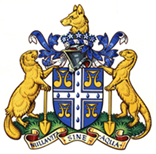Open to
Liverymen / Freemen/ Associates / Guests
Presented by Glyn Addicott, Operations Director Hydraulic Analysis Ltd
About this Webinar
Oil and gas pipelines around the world have, for many years, been monitored and controlled by hydraulic models which are driven by live data from pressure, flow, temperature and fluid composition sensors. Water companies have always lagged behind oil companies due to the lack of available pipeline sensors but this is changing rapidly as the cost of sensors drops. Water networks are now undergoing a rapid phase of digitalisation due to the availability of live data. These real-time pipeline management systems are commonly known as ‘Digital Twins’ and give operators a wealth of additional information, including virtual pressure / flow data throughout the network and leak locations.
The webinar will discuss a number of digital twins installed by the Hydraulic Analysis Group around the world, including London, Canada, Dubai, Qatar and Stoke-on-Trent. In addition to leak detection, the webinar will detail how live and operational digital twins of water networks can reduce energy consumption and carbon emissions by optimising pump schedules based upon weather predictions and past events. The webinar will also demonstrate how digital twins of heat networks can be used to optimise the control and operation of energy centres and thermal stores. Heat networks are going to form an integral part of the UK’s decarbonisation strategy to reduce the carbon emissions associated with domestic gas boilers.
About the Speaker
Glyn Addicott is a Chartered Engineer with over 25 years’ experience in pipeline hydraulic design and pressure transient analysis, having undertaken more than 300 studies on pipelines and networks in over 50 countries.
As a Director within the Hydraulic Analysis Group, Glyn is now involved with the calibration and installation of real-time Digital Twins of trunk mains, networks and DMA’s across the UK and worldwide. The live hydraulic simulators are used to reduce energy consumption, rapidly detect leaks and bursts, determine the cause and source of pressure transients, eliminate pressure transients, optimize system performance and train operators. The hydraulic modelling software used by the Group ingests acoustic data and is taught to spot leaks using pattern recognition and machine learning.
Next events
-
-
 02 Oct 2025
02 Oct 2025The City Environment Debate – Sustainable UK Cities: What, How and When?
- Arup, 8 Fitzroy Street, London W1T 4BJ, UKLocation



